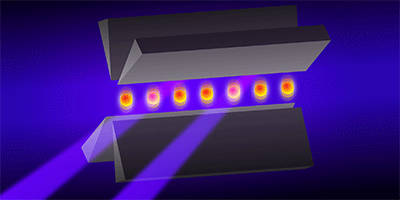A Quantum Machine Made of Ions
In computer science, the renowned “extended Church-Turing thesis” says a Turing machine can perform a computation as efficiently as any physical device. Proof the thesis is wrong would come from showing a quantum machine solves a problem significantly faster than a classical one—and would shake up the current way in which computer scientists classify the difficulty of a problem. In Physical Review Letters, Chao Shen at the University of Michigan, Ann Arbor, and colleagues propose a way to make such a quantum machine with ions.
Shen et al.’s theorized machine would perform a task, first proposed in 2011, called boson sampling. Roughly, the idea is to start with an “input” of N identical bosons, allow them to make a random walk and then find the probability (the “output”) that they are distributed over a certain set of positions. The time it takes to calculate this probability on a classical machine grows exponentially with N, while an appropriately designed quantum machine could find a solution much more efficiently.
Boson sampling experiments have already been carried out with photons, but these tests involved, at most, four particles; according to theory, ten or more are needed to see a quantum speedup. Shen et al.’s boson sampling machine instead consists of a line of trapped ions, spaced roughly micrometers apart. The “input” bosons are the quantized vibrations (phonons) in the ion string, which could be initialized by a laser; the “output” is the phonons’ final states, which shift the atoms’ internal energy levels and could therefore be read out with another laser. The authors argue that, using existing ion trap technology, their machine could handle to bosons. – Jessica Thomas





